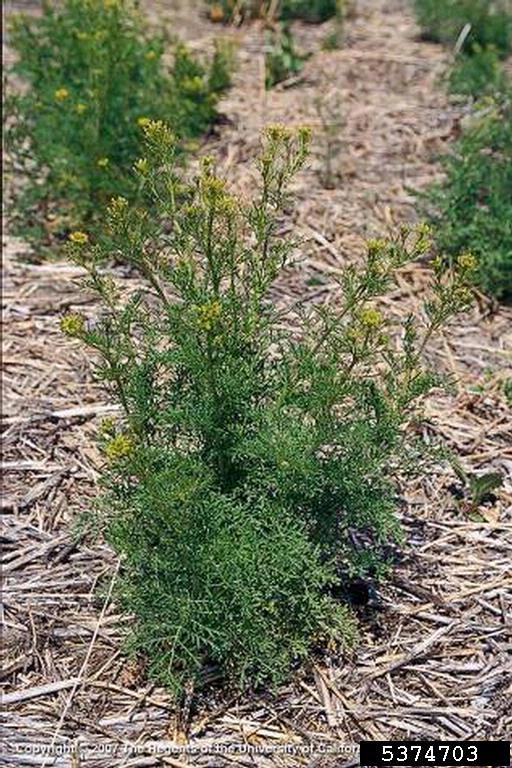Weed of the Month: Flixweed
 | Author:
Allison Kosto, MSU Broadwater County Extension Agent
MSU Broadwater County Extension Agent |
Weed of the Month: Flixweed Allison Kosto MSU Broadwater County Extension Agent
I recently had a phone call from a concerned client who wanted control recommendations for a “weed with the yellow flowers.” I couldn’t help but chuckle because there are MANY weeds with yellow flowers. Flixweed is one of these common weeds with yellow flowers that often gets confused with other types of mustard weeds. It also goes by the names herb sophia and tansy mustard.
Description & Habitat Native to Eurasia and northern Africa, flixweed is now widespread across North America and has been found in every county in Montana. It can be found in gardens, landscaped areas, cropland, rangeland, vacant lots, roadsides and other distributed sites.
Flixweed is in the mustard family with other familiar species including tumble mustard, hoary cress (whitetop) and shepherd’s purse. It is an annual (life cycle of one year) or a biennial (life cycle of two years). It has a tap root. The main stem is 8 to 32 inches tall. The upper half of the stem had many branches. Leaves are fern-like and are covered with fine hairs. It has clusters of very small yellow flowers with four petals. Flixweed produces narrow seed pods that are ½ to 1 ¼ inches long. It is a prolific seed producer, and the seeds have good longevity in the soil.
Like other weeds, flixweed can displace native and desired vegetation and decrease forage production and plant diversity. It is known to be a pioneer colonist, often one of the first plants to establish a distributed site. It can be toxic to livestock when consumed at flowering and full maturity. It is not as toxic in younger stages. Mustard plants including flixweed can also accelerate other issues including selenium deficiencies and nitrate toxicity. However, it has a strong order and taste, so livestock tends to avoid it.
Management Avoiding disturbance or overgrazing is also often effective to prevent the establishment of flixweed. It is not very competitive, so maintaining a healthy population of native or desired species is helpful to control flixweed. Once it is established, the key to managing it is to prevent it from going to seed. This can be done with hand pulling, digging or hoeing before seed production. Make sure to cut or remove the crown. Mowing can be effective but may need to be repeated. Grazing is not recommended due to toxic qualities.
Herbicides are also an option and are most effective in the seedling stage. The plant is sensitive to most chemicals at this stage. Commonly used chemicals include 2,4-D, Banvel and Weedmaster. Always read and follow the entire label when applying herbicide. Common chemical names are used for clarity but does not imply endorsement of a product or brand.
For assistance on weed identification and management, contact the MSU Extension Office in Broadwater County at 406-266-9242.
Article Images
Click on Image Thumbnail(s) to view fullsize image
PhotoCredit: Allison Kosto
Image 1 Caption: Flixweed Photo Credit: Allison Kosto
